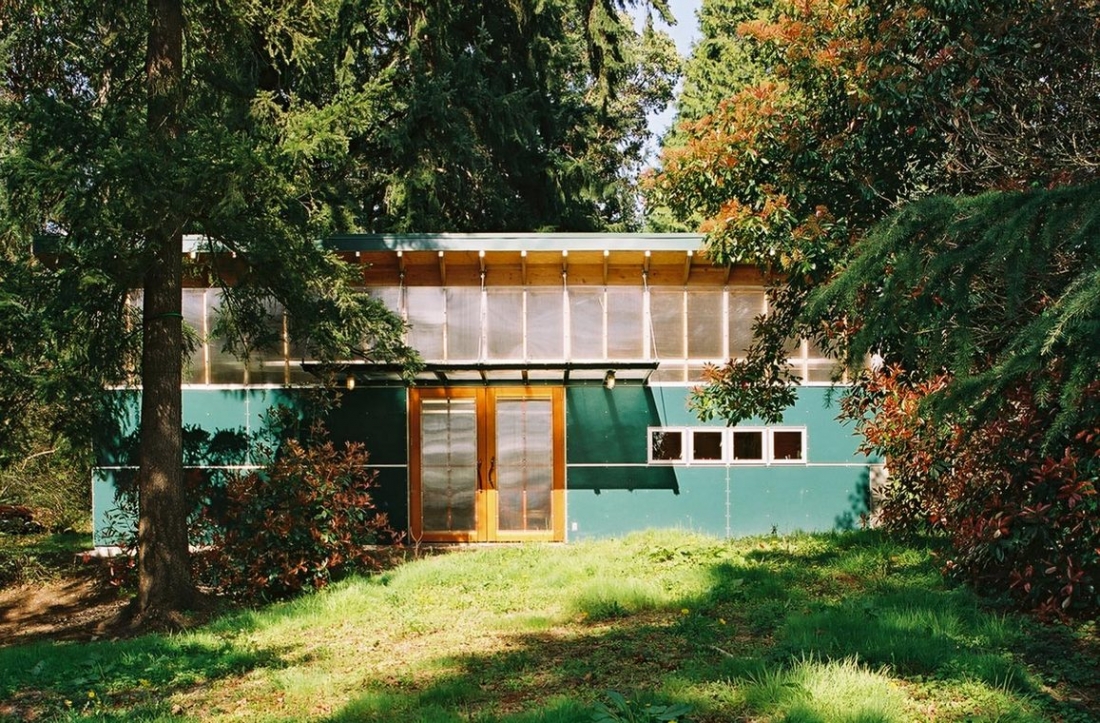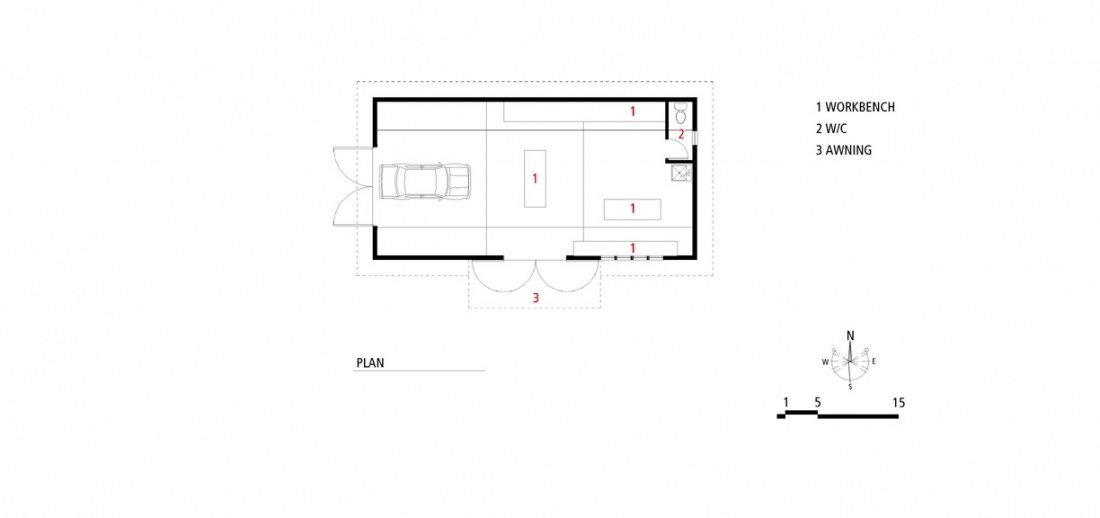Our goal was to make a simple, modern workshop outbuilding to be used for hobby cabinetmaking and appropriately reverent storage and display of our client’s vintage Mercedes 230SL convertible.
The idea of a planted roof came up early in the design process. By setting the floor level low and digging the building partly into the site, and sloping the roof up and away from the neighbors yard and planting it, we minimized the visual impact of the new structure, as well as accruing all the environmental and aesthetic benefits that come with a blooming roof.
The planted roof is part of the Northwest EcoBuilding Guild-organized and King County-sponsored Green Roof Project, intended to document and publicize the ecological benefits of residential green roofs. American Hydrotech donated their green roof system, Snyder Roofing, a certified American Hydrotech green roof installer, installed the roof membrane and drainage layer, and Guild volunteers helped with the installation of plant materials. Please visit the Guild’s web site (www.ecobuilding.org) for continuing updates on the study.
The American Hydrotech green roof system is typically used on large commercial roofs of over 10,000 square feet. At around $15 per square foot installed, it is more expensive than many homeowners can afford. It does come with a warranty like any other roofing material, which is a major advantage. We followed the manufacturer’s recommendations and details to the letter, in order to have a “control” green roof system against which to judge the performance of the less expensive experimental systems of the Green Roof Project. (For example, the American Hydrotech details called for a border of gravel around all edges of the roof that on a larger roof would be less noticeable.)
The planted roof did not fare well in the drought of 2003. A housesitter misunderstood the watering regime, and most plants on the roof withered. It was replanted in spring of 2004, but plantings on the roof are still not as well established as one would hope. We are not yet able give definitive reasons for this. The monitoring which was to provide empirical data on the roofs of the Guild’s Green Roof Project has yet to be implemented.
An excellent cabinetmaker, our client was able to provide much of the finish work on the interior, as well as fabricating the large wood and polycarbonate exterior doors. His work was beautifully consistent with the environmental goals of the project. At our request, Jim provided us with a list:
- Free standing workbench; made by J. Sproull; birds-eye maple with walnut inlays
- Workbench along and attached to south wall; reclaimed bowling alley lane;
- Second Use Building Building Materials (SUBM); southern yellow pine, shelving in south west corner: cut off sections of above bowling alley material
- Blue cabinets along south wall (supports workbench), reclaimed kitchen cabinets SUBM; painted to match floor color
- Blue Credenza along south wall; reclaimed from an architects office SUBM; painted to match floor color
- Metal drawers; reclaimed from school science display cabinet;
- Shelving to support metal drawers: reclaimed from neighborhood
- Shaker peg border; reclaimed high school bleachers SUBM; ripped to width for use
- Table saw out-feed table support; reclaimed basketball backboard support; local neighborhood kid
- Bathroom door: reclaimed door for owner’s residence
- Drill press stand: reclaimed cabinet; painted to match floor color and set on rollers
- South wall Madrona door handles: reclaimed windfall; owner’s woodlot
- Rolling cabinet located on east wall; reclamined display cabinet from school (left original color)
- Metal cabinet on east wall over sink (first aid cabinet); reclaimed medical office cabinet SUBM (left original color)
- Misc. wood thin stock storage bin (southeast corner): wooden barrel clothes washer circa ?; unknown origin
As with all of our projects, this one incorporates a number of green features spread evenly across the categories of settlement ecology, energy conservation, resource conservation and healthy building.











